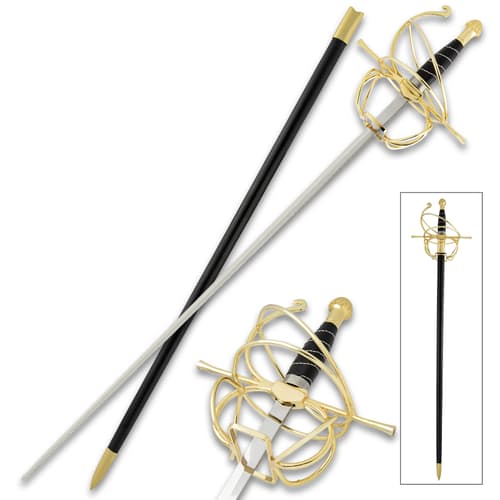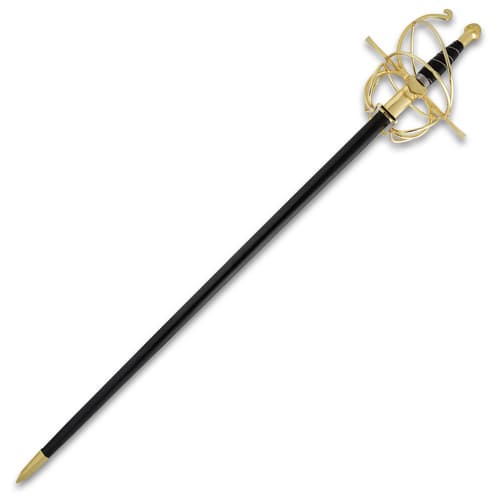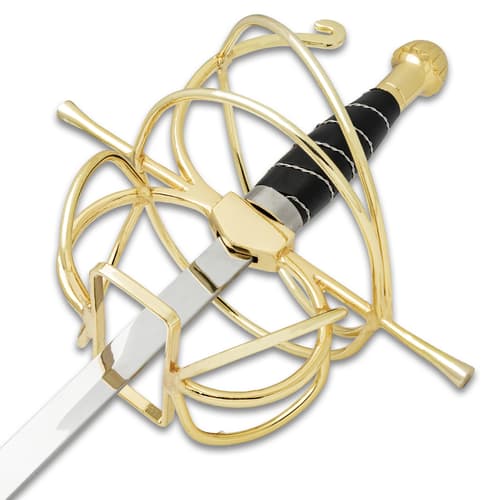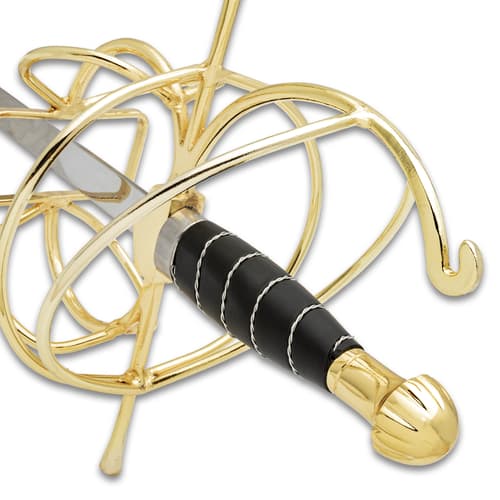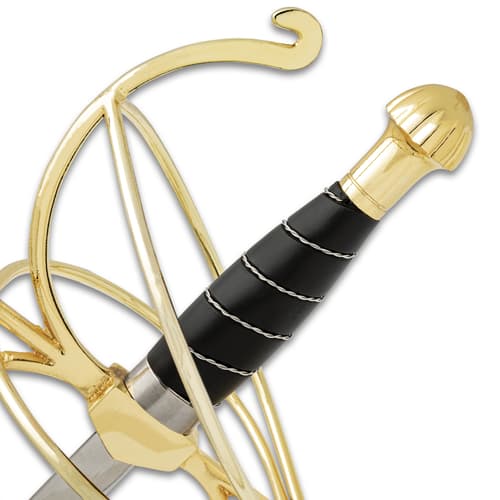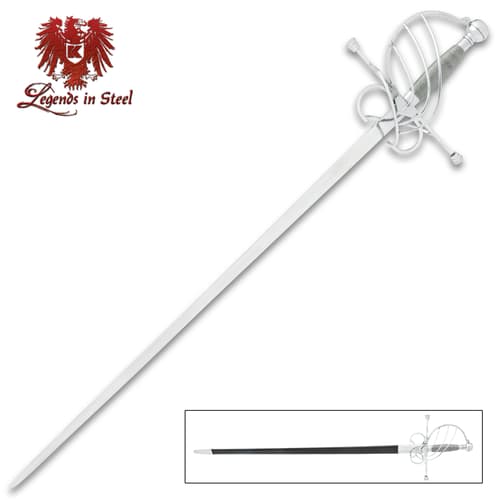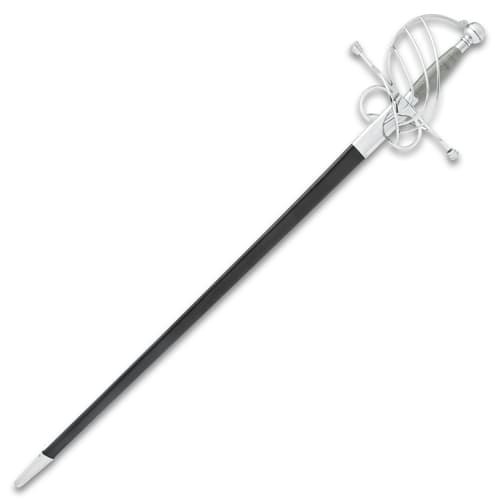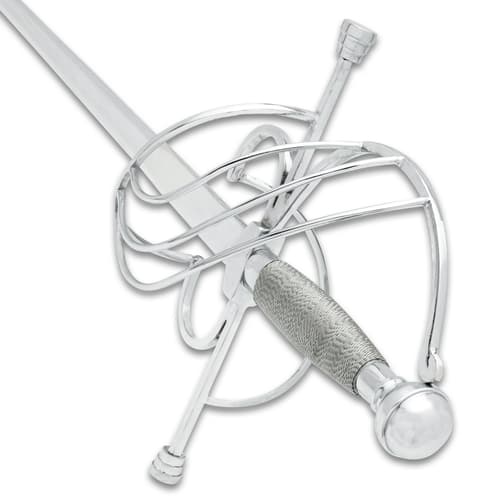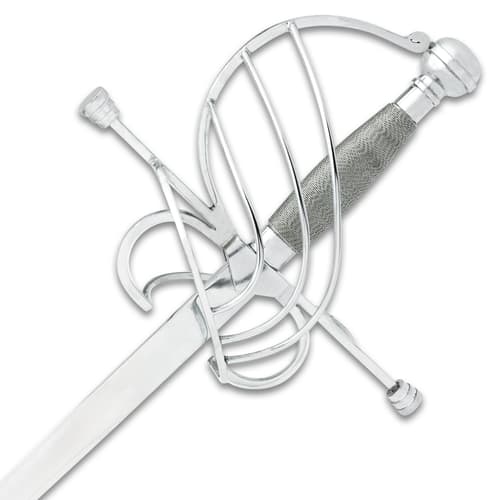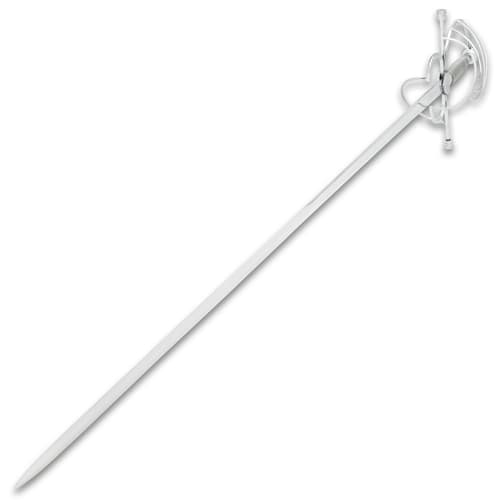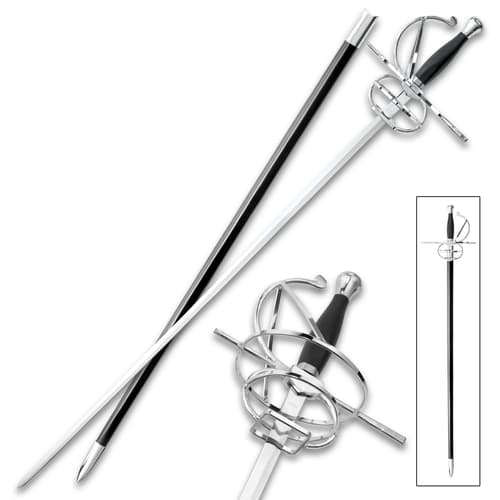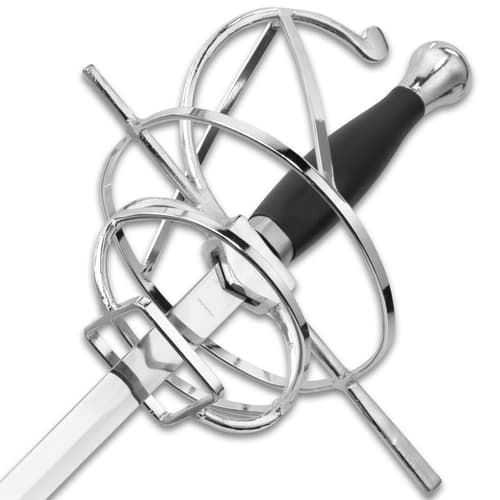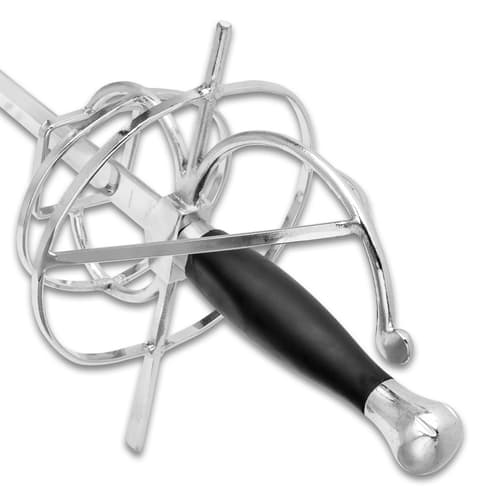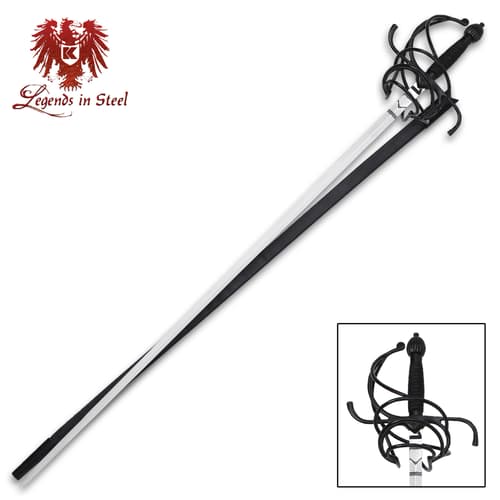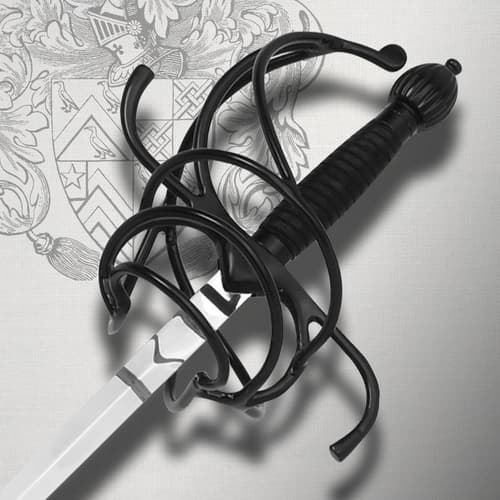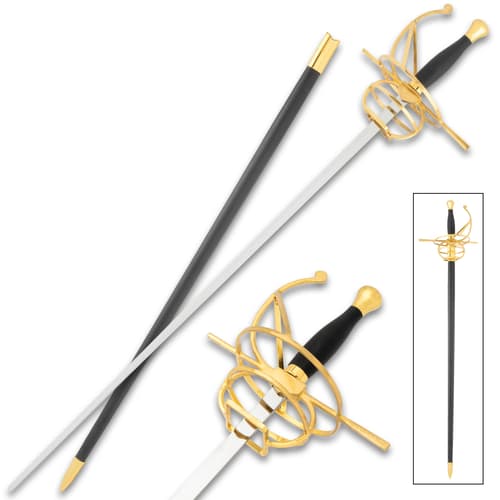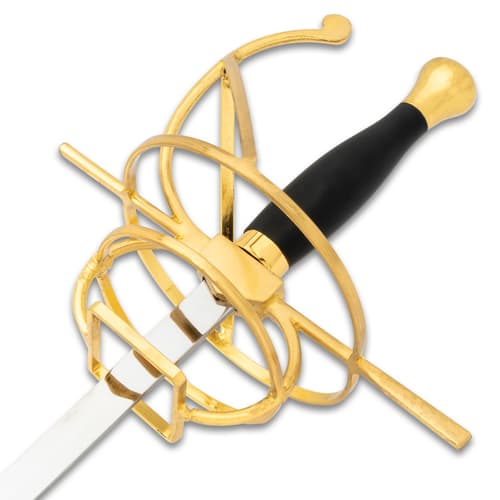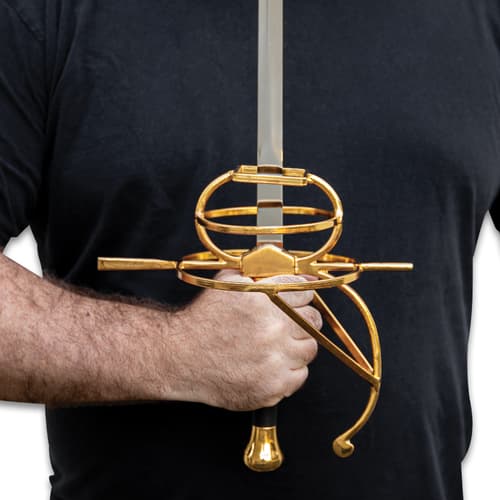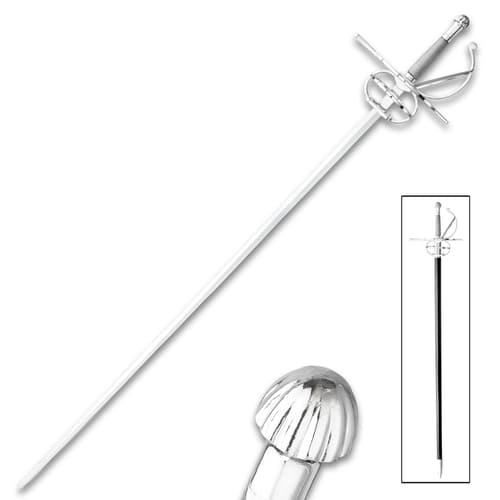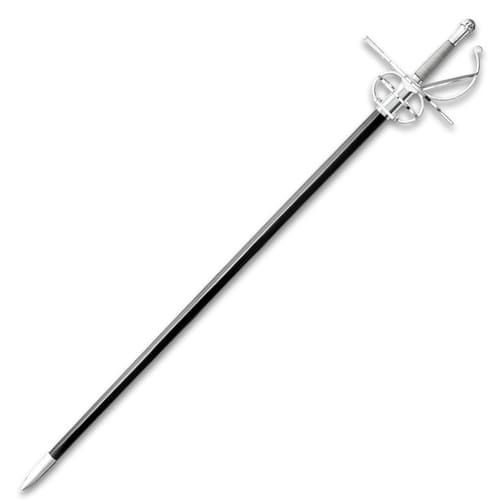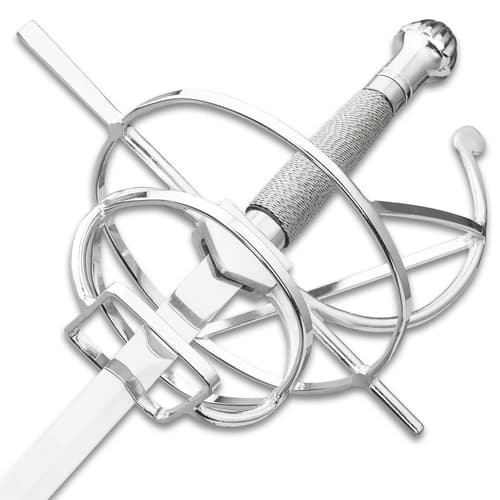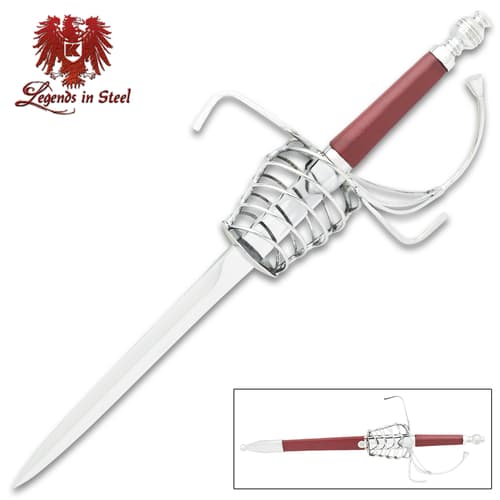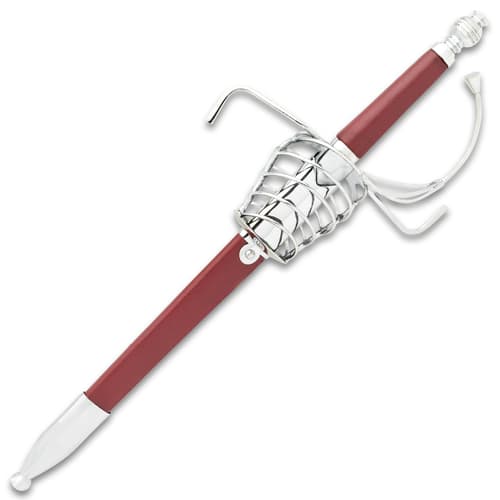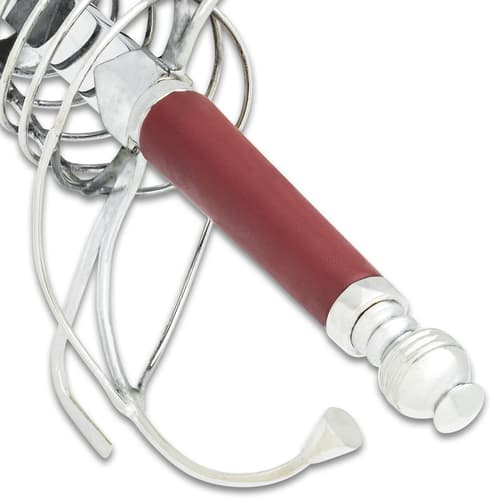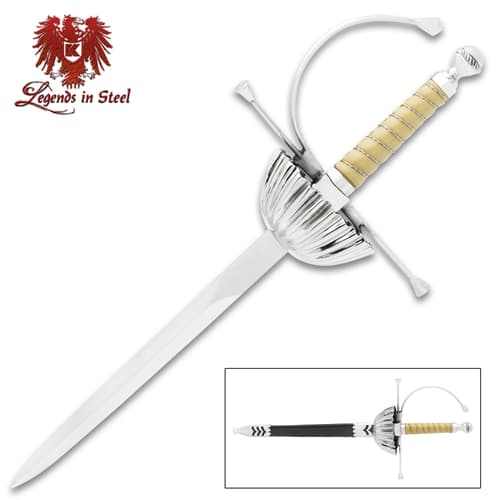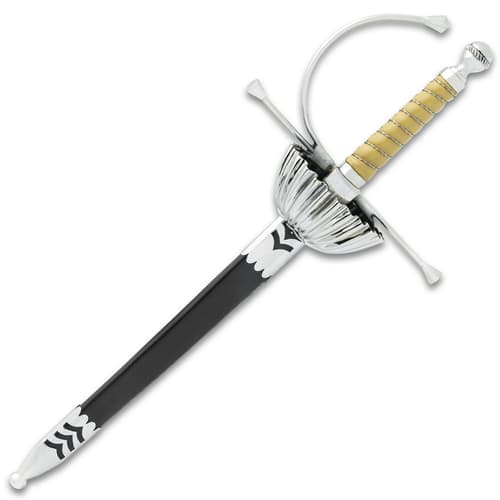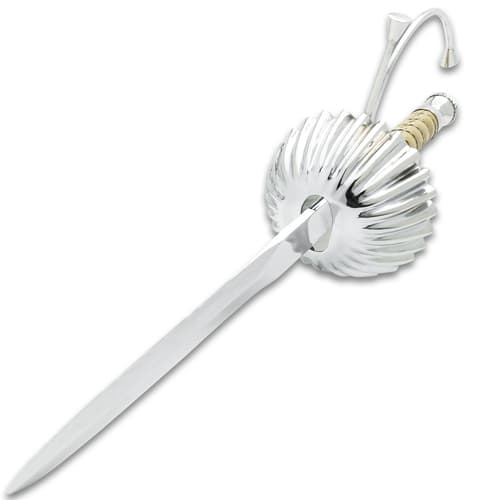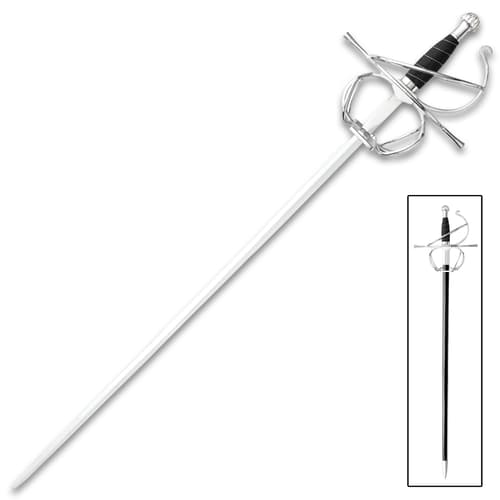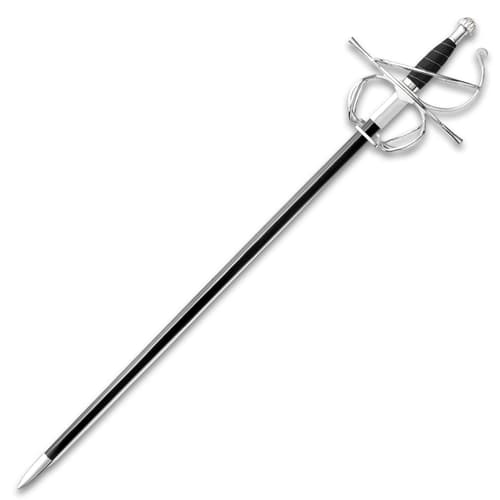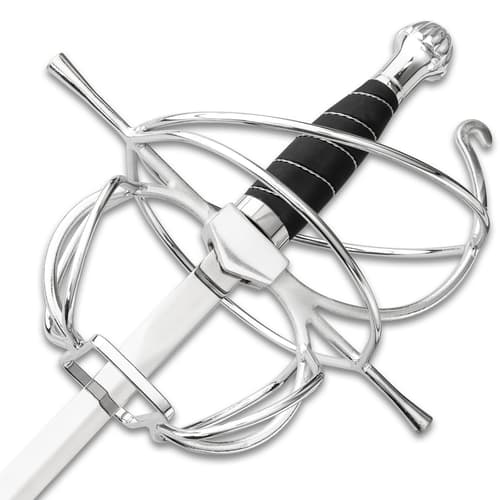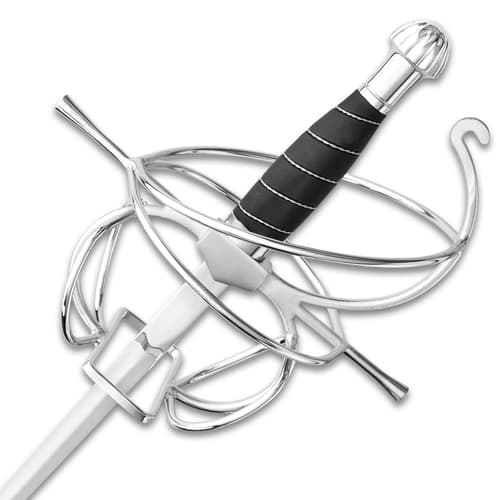Rapiers
9 Results
$119.99
51216
Legends In Steel Combat Rapier And Scabbard - High Carbon Steel Blade, Wire-Wrapped Handle, Steel Handguard - Length 45 1/2"
USD
2
Legends in Steel
Swords
Historical Swords
Rapiers
CL3
Category L3
166.99
40430
Dueling Rapier Sword And Scabbard - Stainless Steel Blade, ABS And Metal handle, Basket Guard - Length 43 3/4”
USD
3
BUDK
Swords
Historical Swords
Rapiers
CL3
Category L3
116.99
$116.99
$119.99
47527
Rapier With Wire-Wrapped Grip And Scabbard - Stainless Steel Blade, False-Edged, Metal Handle, Metal Basket Guard - Length 44”
USD
6
TrueSwords
Swords
Historical Swords
Medieval Swords
CL3
Category L3
131.99
$79.98
Price reduced from
$96.99
to
$85.98
Price reduced from
$96.99
to
47526
Rapier With Black Grip And Scabbard - Stainless Steel Blade, Metal Handle, TPU Grip, Metal Basket Guard - Length 44”
USD
9
TrueSwords
Swords
Historical Swords
Medieval Swords
CL3
Category L3
97.99
RAPIER FAQS
- What defines a rapier sword?
A rapier is known for its slender, long blade and ornate hilt. It was primarily used during the Renaissance for thrusting and fencing. A rapier sword’s blade is not designed to sustain long slashes, but rather thrusts and lunges. The “basket hilt” is designed to protect a wielder’s hands while in combat. Its design focuses on precision and elegance, distinguishing it from heavier swords used in combat. Allegedly, the name rapier derives from a Spanish word, “espada ropera,” for “dress sword. - How is a rapier sword intended to be used?
A rapier’s long, thin blade is designed for a very special type of swordplay that focuses on speed, precision, and long lunges and thrusts, taking advantage of the blade’s needle point and thin blade. Rapiers are not intended to be used for parrying, and indeed, oftentimes they were carried alongside bucklers (a small type of shield) or smaller daggers to be used for parrying an opponent’s blade. These smaller daggers were sometimes called “parrying daggers” or “main gauche,” and wielded in the user’s non-dominant hand. - What materials are used to make rapiers?
Rapiers are typically made with high-carbon steel or stainless steel blades for durability and sharpness. The hilt and guard often feature materials like brass, steel, or leather for a combination of strength and intricate design. - Are rapiers functional or decorative?
TrueSwords.com offers both functional and decorative rapiers. Functional rapiers are designed for fencing, reenactments, or stage performances, while decorative rapiers are perfect for display. Check the product details to determine the intended use. - What maintenance is required for a rapier?
To maintain a rapier, regularly clean the blade with a soft cloth, apply a light coat of oil to prevent rust, and store it in a dry environment. Proper care will keep the rapier in excellent condition over time.

